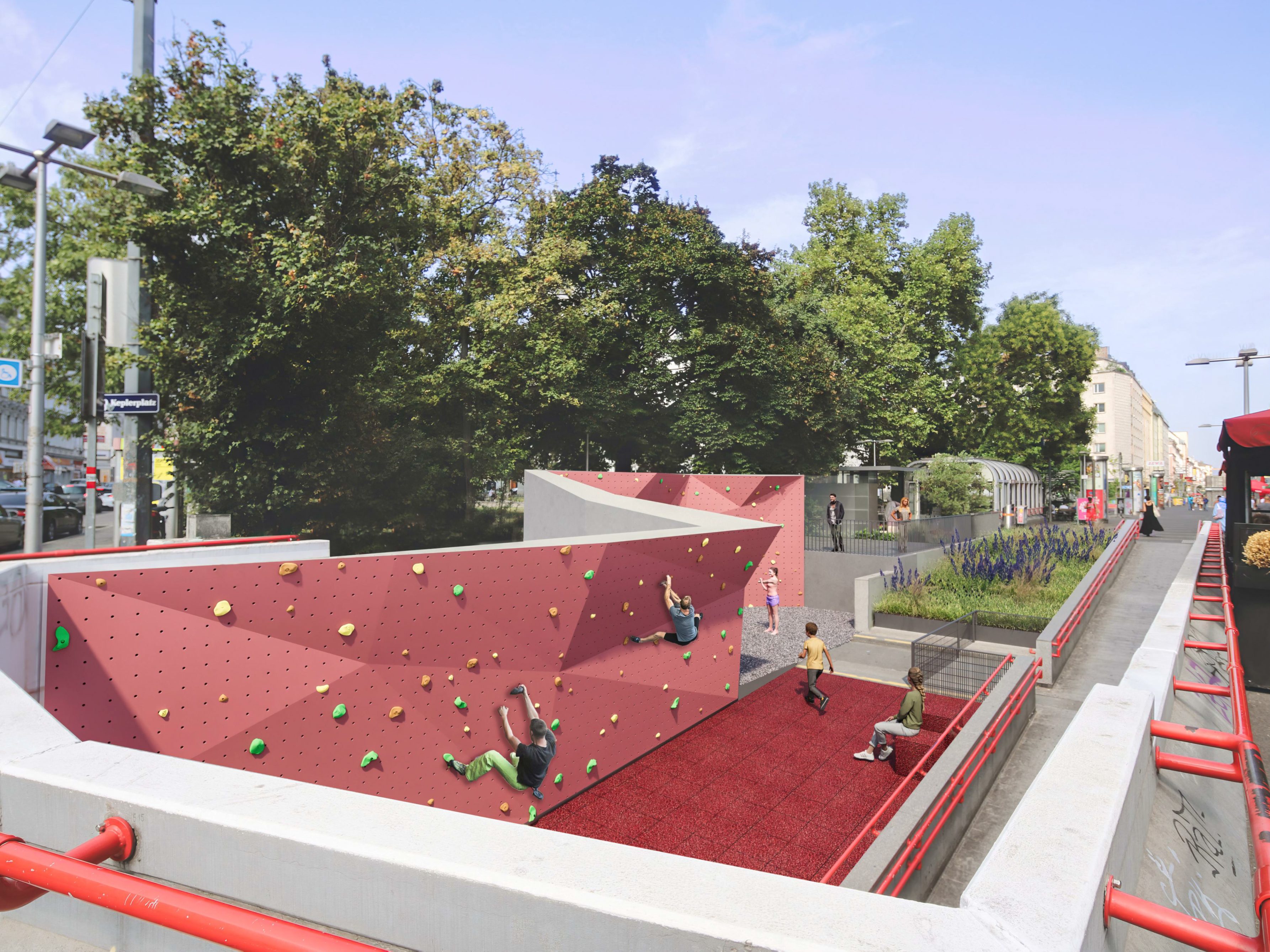Vienna Favoritenstraße Becomes Climate-Friendly: Climbing Wall as New Highlight

The bouldering wall is between 2.7 and 4.5 meters high, accommodates up to 30 people, and is intended not only to promote movement but also to enliven public space. "Where there used to be gray concrete, a place for movement, encounter, and participation is being created," says NEOS club chairwoman Selma Arapović. A special fall protection floor will be installed for necessary safety, and the lighting in the passage will also be modernized.
Sport as Social Intervention and Creative Urban Transformation
City Planning Councilor Ulli Sima (SPÖ) sees the project as a "best-of" of the city's greening initiative: "We are unsealing, greening, and cooling at full speed on all corners." Favoriten district leader Marcus Franz (SPÖ) also emphasizes the social component: "The new bouldering wall will hopefully not only provide a field of activity for climbers but also spark conversations and curb graffiti."
Comprehensive Redesign in Vienna-Favoriten in Two Construction Phases
Favoritenstraße is receiving a comprehensive facelift over a length of more than one kilometer – from the main train station to Reumannplatz. The first construction phase (Platz der Kulturen to Landgutgasse) is already being implemented and brings 35 new trees, 2,000 square meters of green space, and a water table for children.
The second construction phase (Landgutgasse to Reumannplatz) will follow at the beginning of 2026. In addition to the bouldering wall, another 1,000 square meters of green space with around 60 new trees will be created here.
Part of the Record Offensive in Vienna "Out of the Asphalt"
The redesign of Favoritenstraße is one of 320 climate projects in Vienna. In total, 243,000 square meters of new or redesigned parks have been created, over 74,000 square meters of street space have been greened, and more than 3,000 new trees have been planted.
According to the city, the unsealing and greening of inner-city zones is a crucial contribution to adapting to climate change – and is intended to significantly enhance the quality of life in the neighborhood.
(Red)
This article has been automatically translated, read the original article here.





